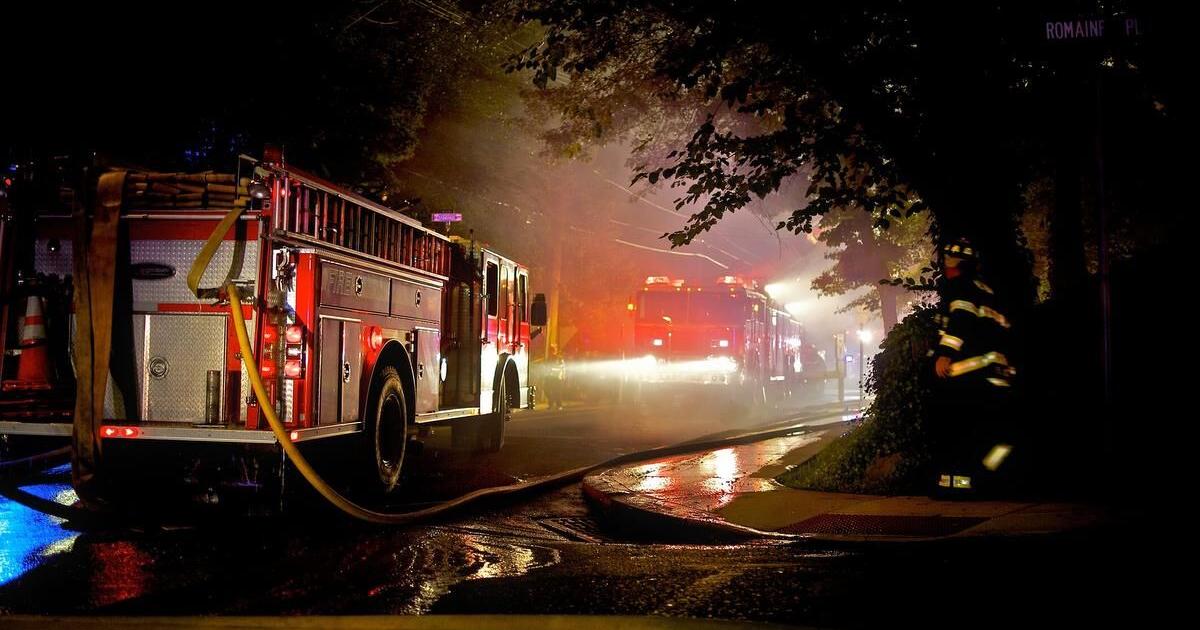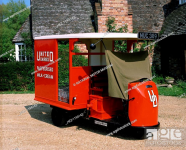- Reaction score
- 8,305
- Points
- 1,160

Hybrid-Electric Troop Transports Are Moving Toward the Battlefield
The quieter, cooler, less maintenance-intensive vehicles will make up at least part of the Army’s future fleet.
Hybrid-Electric Troop Transports Are Moving Toward the Battlefield
The quieter, cooler, less maintenance-intensive vehicles will make up at least part of the Army’s future fleet.

BY MARCUS WEISGERBER
GLOBAL BUSINESS EDITOR
OCTOBER 14, 2022 02:16 PM ET
From the outside, the open-air troop transport on display inside the Washington Convention Center looks like the ones being purchased by the U.S. Army. But under the hood, it's a different story.
The souped-up dune buggy, a militarized version of the Chevrolet Colorado ZR2 pickup truck, is fully powered by batteries. Gone is the diesel fuel engine, replaced with an electric motor. It’s the type of technology that one would expect to see at the Washington Auto Show—held inside this very same building—not at the largest land-warfare show in the United States.
Yet as demand for electric and hybrid passenger vehicles increases across the United States, the U.S. Army too is getting closer to adopting the same propulsion technology in armored personnel carriers. Military vehicle manufacturers are making sizable investments in the technology, some of which were on display this week at the Association of the U.S. Army’s annual meeting in Washington.
For the Army, hybrid and electric vehicles are not just about saving the planet, but also saving soldiers’ lives. They run quieter and emit less heat than ones running on a combustion engine, helping to conceal them from sensors on satellites, aircraft, and missiles.
“It's got a really low IR signature,” Stephen duMont, the president of GM Defense, said of the all-electric Infantry Squad Vehicles at this week’s conference. “There's no hot engine. There's no hot exhaust pipe. There's no hot hood. Those are the things that tend to give you contrast when you're targeting.”
DuMont would know; as a former Army Apache attack helicopter pilot, he spent years using infrared to spot his targets.
While the Army appears less immediately interested in all-electric military vehicles, hybrid personal carriers—ones that run on diesel fuel and batteries—could find themselves on the battlefield by the next decade. All five companies bidding to replace the four-decade-old Bradley fighting vehicle have proposed new troop carriers with hybrid electric engines, according to Army officials.
“That's a major shift for us,” Maj. Gen. Glenn Dean, program executive officer of Ground Combat Systems, said Monday. “Each [company] has taken a different approach to how they achieve the hybrid electric. So that's really exciting that we have sort of a wide range of risk-based approaches.”
The Army isn’t requiring companies to use hybrid technology in the Bradley replacement, called the Optionally Manned Fighting Vehicle, but leaders are encouraged to see companies including the technology in their proposals.
“What we have specified for requirements revolve around things like fuel efficiency, silent watch, and other operational requirements for the vehicle that really lend themselves to a hybrid electric solution,” Brig. Gen. Geoff Norman, director of Army’s Next Generation Combat Vehicles Cross Functional Team, said during a Monday briefing.
“Silent watch” means running electronics and sensors inside a vehicle while the engine is turned off.
The Army’s climate plan is calling for more electric and hybrid vehicles. It is also looking for ways to retrofit existing vehicles with hybrid or electric propulsion. It has been testing two hybrid electric Bradleys.
“We're comfortable [that] if we can package for Bradley, we can package for most of the other combat vehicles in the fleet,” Dean said.
Oshkosh Defense, which makes the Joint Light Tactical Vehicle, created a hybrid version of the troop carrier that’s replacing the Humvee. In the coming weeks, the hybrid truck will participate in a “real-world simulation” for the Army, said George Mansfield, vice president and general manager of joint programs for Oshkosh Defense.
The hybrid JLTV can drive up to 45 miles per hour for 30 miles on its batteries, Mansfield said. It can run in silent-watch mode for eight hours. The combustion engine can recharge those batteries in about 30 minutes.
“You can imagine the fuel-economy savings [since] you're not sitting there idling for eight hours,” he said. “We've done a lot of testing, we're at about 20 percent fuel economy savings [and] we've got a couple other things that we want to do to the vehicle to give us another three to 5 percent fuel-economy savings.”
After some tweaks, the company is hoping to get more distance and speed in battery mode, Mansfield said. Like commercial hybrids, the hybrid JLTV regenerates power when the brakes are applied.
The hybrid JLTV’s batteries make it roughly 1,000 pounds heavier than the regular combustion fuel version. The company says existing JLTVs—it has produced more than 18,000 of them—could be retrofitted into the hybrid version if the Army wants.
Oshkosh, which also makes fire engines, trash haulers, mail trucks, and other types of large fleet vehicles, has been working with hybrid power since 2005, Mansfield said.
General Dynamics Land Systems showed off hybrid versions of its Abrams tank and Stryker.
GM Defense benefits from the billions of dollars spent by General Motors to develop electric vehicles for the commercial market.
“We bring the commercial scale of General Motors and we also bring the investment that comes with the massive supply chain we have to source materials at scale, [which] allows us to drive costs down, bring more value to our customers,” duMont said.
But, duMont said, the division’s small size allows him to run the business as if it were a startup. That allowed the company to convert its Infantry Squad Vehicle into a battery-powered vehicle in three months.
“We want to be the trusted partner of our defense and government customers as they make this journey to a more electric, autonomous and connected future,” he said. “We feel like leveraging the big commercial investment is a really smart way to go.”
There are still lots of questions about if or when full-electric tanks and armored vehicles will find their way into combat. They require charging infrastructure to juice up batteries, but also require less maintenance because they have far fewer moving parts and generate far less heat.
GM Defense is experimenting with a towable battery trailer.
“It's the infrastructure challenge, really, that we have to and we're focused heavily on working that infrastructure challenge with our customers, in this case with the Army to understand how we enable them to bring power, bring energy, out into the battlespace, and move power to the tactical edge,” duMont said. “So that's a big focus of ours as well.”
“ltimately, we know the end state is to move towards all-electric because there's so much value in not having the redundancy in the powertrain and redundancy [in] dual engines, dual fuel sources, but it's a logical step,” he said. “We're looking at getting to a point where the vehicle is incredibly survivable, very reliable and supports all the mission needs.”
The Army has purchased a new all-electric GMC Hummer for experiments, but it’s a non-militarized truck.
And in the MILCOTS catalogue
Chevrolet Silverado 1500 Hybrid | Silverado 1500 Hybrid History | New Silverado 1500 Hybrid Pricing and Used Silverado 1500 Hybrid Values
Research Chevrolet Silverado 1500 Hybrid model details with Silverado 1500 Hybrid pictures, specs, trim levels, Silverado 1500 Hybrid history, Silverado 1500 Hybrid facts, and more.








